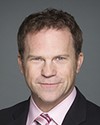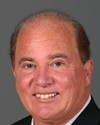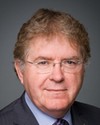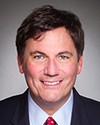Thank you, Mr. Chairman and committee, for inviting us today.
I'm not as well known, obviously, as Mr. Wells, so I'll give you a 30-second brief history of who I am and what we do.
My name is Paul Clay. I have a company called Seacom International, and we're an emergency preparedness company located in St. John's, Newfoundland. We've been here for 15 years. About 70% of our business is related to oil and gas and marine, and the other 30% is mining, etc. In other words, they're large industries that operate in quite often remote and dangerous locations.
Because of that, we have a lot of insight into how emergency preparedness is managed in other countries--specifically, the physical response itself, be it by helicopter, by boat, or through a combination; how long it might take; what the standards or norms are in other countries; and how to interpret some of the information that one may look at from other countries, which can at times be very confusing. One may often see a response time of 15 minutes or 30 minutes or 45 minutes, but there are reasons for those response times, so we have to keep a little bit of an open mind as we interpret the data.
That's enough about who we are.
What I'd like to do is move forward. What I'm going to talk about today and answer questions on.... As I said, we have a lot of information, but we can look at specific areas of the world—Australia, obviously Canada, the Republic of Ireland, Mexico, Norway, the United Kingdom, Northern Ireland, the United States, Brazil, Venezuela, and other countries where we've worked--where we have specific data and information about search and rescue response times. We can look at not only the actual time, but in a lot of cases the reasons those times exist.
Of course, one must always consider that a number of factors go into determining what a response time may be, one being the distance to the location where the response may be anticipated. Just to give you an example, in the oil and gas industry we're now operating more than 500 kilometres offshore. That's a long way. It substantially limits the time one might have on location to physically do a search and rescue operation. Helicopters can go only so far.
On the onshore side of Newfoundland and Labrador, we have extremely large projects operating in Labrador in remote locations. Projects coming, such as lower Churchill, for example, will, if they go ahead, have maybe 2,000 to 3,000 people and operate in very remote locations, with lots of helicopters and lots of potential for problems.
Again, when one considers search and rescue response times and physical locations of helicopters and all that sort of stuff, it's very important to look outwards and in, not necessarily inwards and out. In other words, maybe it's not what the Department of National Defence has to do or what the oil industry has to do, but what the needs are of the greater community that is expecting us to provide service to them--so 530 kilometres from Gander and some 435 kilometres from St. John's, which is a difference of about 40 minutes in response time if you look at dispatching a helicopter from St. John's or a helicopter from Gander.
There are a number of factors that must be considered when interpreting the data that we will give you today, such as the area of responsibility and how big it is. How big is the area that we must respond to? We have three aircraft in Gander, two of them operational, that have to respond to an enormous geographical area. There are the incident patterns: where do most of the problems occur? Are they marine? Are they terrestrial? Are they fishing boats? Are they oil industry? A fishing boat with a crew of five is five people who may have a problem. An oil and gas installation could have two people on board, and you could lose the installation in five minutes, so response times become critical. As the Honourable Mr. Wells has pointed out, two or three minutes in the waters of Newfoundland is a long time.
Is it a land versus marine response? What is the population to be protected? Is it one person, two hundred, a thousand? There is also the type of industry those services must be provided to, and there's the number of search and rescue assets, such as helicopters, that may or may not be available.
I do have specific data for each country. I'm not sure whether you would like me to address those now, very briefly....








